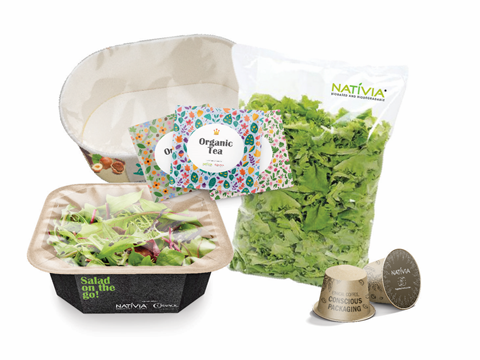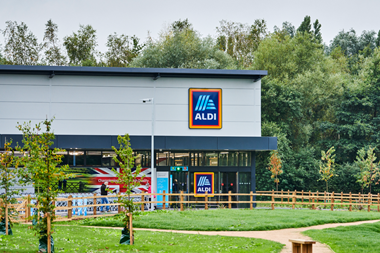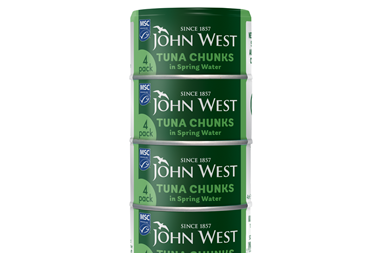
As part of our Sustainability Awards Finalist Interview series, we asked Taghleef Industries about its development of biaxially-oriented PHA-based films and its collaboration with Corapack for flexible packaging applications, nominated in the Pre-Commercialized Renewables category.
You’re a finalist in the Sustainability Awards 2024. Congratulations! To start off, could you summarize your entry, in less than 50 words?
Our innovation consists of the development of biaxially-oriented films for flexible packaging, enhanced with Polyhydroxyalkanoates (PHAs) biopolymers. These NATIVIA films are biobased and designed for industrial and home compostability, thus offering an innovative alternative to fossil-based plastic packaging, especially those which cannot be recycled or are contaminated with food residuals.
Why do you think the judges were impressed with your entry? Tell us about what is innovative about your project and/or about its impact on packaging sustainability.
PHA is an emerging class of biopolymers offering significant promise due to their two primary advantages: they can be produced by bacteria from almost any renewable carbon-rich feedstock and they exhibit unique biodegradability properties, breaking down in various environments (including compost, soil, and water).
By incorporating PHA into our NATIVIA films, to produce – as a first step - flexible packaging which can be certified biobased, industrial and home compostable, we aim to develop innovative packaging solutions that contribute to reducing reliance on finite fossil-based resources and to promote the valorisation of biowaste and the production of quality compost.
Also, as research and development progresses, it paves the way to a future where packaging can be produced from a wide variety of renewable resources (first/second/third generation, including organic waste) and that can be home and industrially composted but not only: should it accidentally leak in water or soil, it would also biodegrade, thereby avoiding pollution and formation of microplastics.
Finally, can you tell us about the ongoing development of your project, e.g. how your innovation/initiative has been received by the industry, or what the next steps are in commercialization/product development?
This development aligns with a promising landscape, with major food brands interested in such solutions and actively seeking them. When presented to the industry, it was well-received by numerous converters and garnered particular support especially from Corapack, an Italian leader in the printing and transformation of flexible packaging, with a special focus on compostable solutions.
This collaboration targets the development of key flexible packaging applications which pose a challenge at their end-of-life stage and home compostability offers significant added value. Examples include flowpacks for fresh produce, tea bag sachets, lids for coffee capsules and heat seal lids for cardboard trays and ready meals.
Over the past few years, we have conducted extensive trials to optimize extrusion parameters and formulations, ensuring both desired biodegradability behaviour and suitable performance. We are currently finalizing our manufacturing processes for commercial production. Our upcoming activities include downgauging, expanding our product portfolio with additional aesthetics and features, and validating our solutions into various applications.
The winners of the Sustainability Awards 2024 will be announced at the Sustainable Packaging Summit, taking place in Amsterdam on 12-13 November. The Summit mobilizes leaders of the FMCG value chain, policymakers, NGOs, recyclers and investors to collaborate, remove barriers and identify opportunities on the road to sustainable transformation.
To learn more or register, visit: https://www.packagingsummit.earth/2024
If you liked this story, you might also enjoy:
The ultimate guide to the Packaging and Packaging Waste Regulation in 2024
How are the top brands progressing on packaging sustainability?
Sustainable Innovation Report 2024: Current trends and future priorities
Everything you need to know about global plastic sustainability regulation








No comments yet